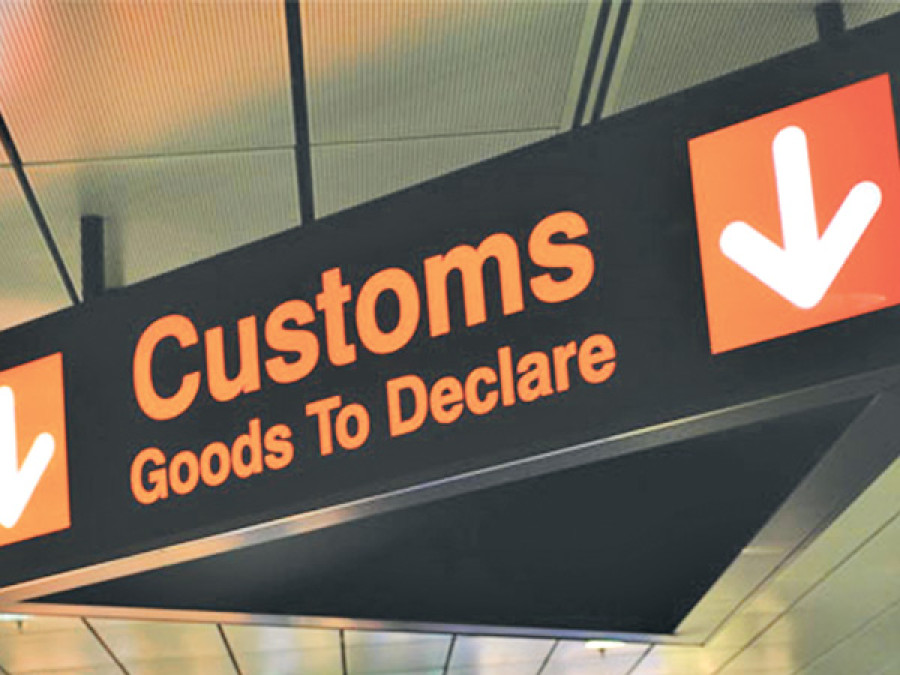Opinion
Clearing customs
Over the years Nepal has introduced a number of trade facilitation measures
Suman Kumar Regmi
As a landlocked country, about 90 percent of Nepal’s trade is transported by road. The Customs Act 2007 stipulates that drivers transporting any goods to be exported or imported must provide details of such goods to the respective customs office before vehicles enter the customs area. Importers and exporters must submit a declaration form, along with the prescribed documents, to the customs office. The customs authorities will then decide whether or not to carry out a physical inspection based on an examination of the declaration form.
Movement of goods
The Customs Act and Regulation 2007 replaced the Customs Act 1962. All companies registered with the Office of the Company Registrar, including foreign ones, may import and export goods in Nepal. Individuals may import as long as they register their business as sole proprietor undertakings.
Customs declarations may be made by importers or exporters, or by customs agents. To become a customs agent, a person must obtain a licence from the Department of Customs under the Ministry of Finance. The licence is valid for one year and is renewable. Customs Regulation 2007 stipulates qualification requirements for customs agents; there is no nationality requirement.
In accordance with the Customs Act 2007, a customs officer may clear goods only upon collecting the duty. Currently, electronic clearance is applied in ten major customs offices covering about 83 percent of declarations in Nepal. The authorities note that in five major customs offices covering about 67 percent of declarations, around 40 percent of cargo is cleared without physical inspection. Most of the consignments are cleared within two hours, while for other consignments depending on the nature of the goods, such as food, plants and plant products, animals and animal products, a longer clearance time is needed.
Price of merchandise
Nepal does not require a pre-shipment inspection. The Agreement on Implementation of Article VII of the GATT is followed in determining customs value of imported goods in Nepal. Thus, the customs value is based on the transaction value of goods, and importers are required to declare the transaction value to the customs office.
If the customs authorities doubt the declared transaction value, the following comparisons may be done in a sequential order: transaction value of identical goods already imported to Nepal; transaction value of similar goods already imported to Nepal; deductive value method—deducting tax, duty, and other costs incurred in Nepal on the selling price of each unit of the goods; computed value method—calculating the costs incurred in the production or manufacture of such goods and profits made or likely to be made by the seller while selling such goods to the importer.
Any person not satisfied with the value determined by the customs office may file an application to the Valuation Review Committee no later than 15 days after the decision or order. Under the Customs Rules 2007, the Committee must make its final decision within 90 days from the date of the registration of the application. If still unsatisfied, the importer may appeal to the Review Tribunal within 35 days after the date of this decision.
Nepal does not apply non-preferential rules of origin. It has not made any notifications to the World Trade Organisation regarding its rules of origin. Nepal applies preferential rules of origin under the South Asia Free Trade Area Agreement. Products wholly produced or obtained in the exporting country are considered originating in the exporting country. Products not wholly produced or obtained in the exporting country may also be considered originating in that country if: the total value of materials, parts or produce originating in other countries do not exceed 50 percent of the Free on Board value of the products and the final process of manufacture was performed in that exporting country.
Better procedures
Trade into and out of Nepal must transit through the ports of its neighbouring countries, particularly India. The Indian ports of Kolkata and Haldia are used for transit of Nepal-bound sea cargo. Kolkata is the largest port. Transit through Kolkata accounts for about 15-19 percent of Nepal’s foreign trade, or 35-45 percent of foreign trade if Indo-Nepal trade is excluded. India and Nepal also agreed to use Vishakapatnam for Nepal-bound sea cargo, although this port is not operational yet.
The entry into force of the Customs legislation in 2007 simplified customs procedures in Nepal. Before 2007, numerous documentary requirements and complicated procedures for transit transport, inadequate inter-modal competition in transit movement, and out-of-date transport vehicles, all caused delays in border crossings. The number of documents required by banks, Nepali Customs, and Indian Customs at land borders and transit ports was reduced to 10 from 15 for imports; and to 9 from 14 for exports.
Further, Nepal has gradually introduced a number of trade facilitation measures thorough the use of computers. Customs clearance has been facilitated through computer software such as, inter alia, ASYCUDA Plus, Selectivity System and Post Clearance Audit and Wide Area Network in major customs offices. This has not only helped to expedite the clearance process but also to keep it transparent. There has been a positive response from business communities on these facilitation measures as well.
Regmi is former deputy executive director of the Trade and Export Promotion Centre




 17.12°C Kathmandu
17.12°C Kathmandu









%20(1).jpg&w=300&height=200)

